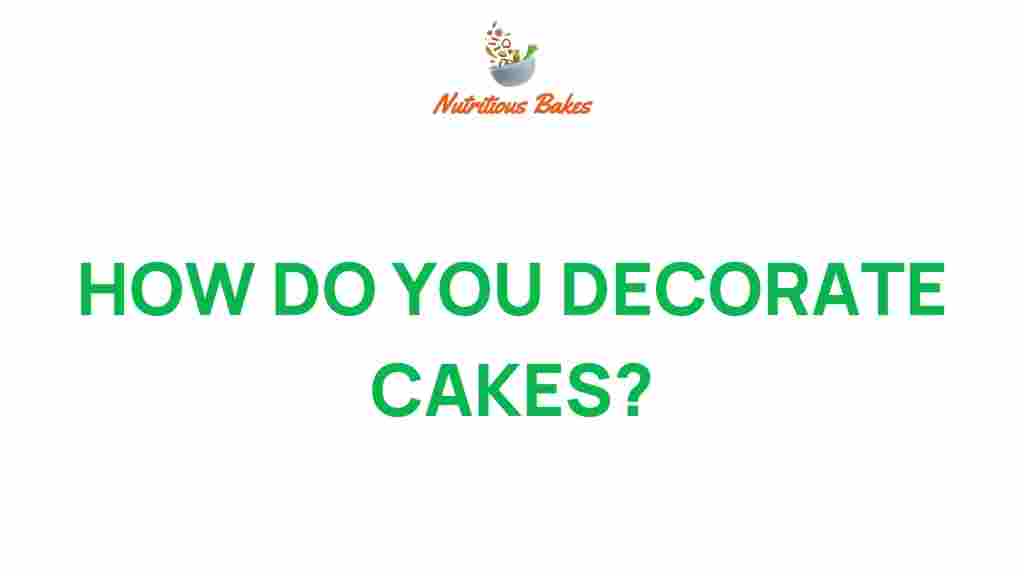Mastering the Art of Cake Decoration
Cake decoration is an essential skill for anyone interested in baking and dessert artistry. Whether you’re preparing a simple birthday cake or an elaborate wedding masterpiece, the techniques you use can elevate your creations and impress your guests. In this comprehensive guide, we’ll explore various baking tips, icing techniques, and creative designs to help you master the art of cake decoration.
The Importance of Cake Decoration
Cake decoration is not just about making a cake look pretty; it’s about creating a memorable experience. A beautifully decorated cake can be the centerpiece of any celebration, capturing the theme and spirit of the occasion. From birthdays to anniversaries, a well-decorated cake adds a personal touch that store-bought cakes simply cannot match.
Baking Essentials for Cake Decoration
Before diving into advanced pastry skills and icing techniques, it’s crucial to have the right baking essentials on hand. Here’s a list of must-have tools and ingredients:
- Cake pans: Various sizes, including round, square, and rectangular.
- Offset spatula: Perfect for spreading icing smoothly.
- Turntable: Allows for easy access to all sides of the cake.
- Piping bags and tips: Essential for intricate designs.
- Food coloring: For adding vibrant colors to your designs.
- Fondant: A versatile icing for creating smooth finishes and decorations.
- Edible glitter or decorations: To add that extra sparkle.
Step-by-Step Process of Cake Decoration
Now that you’re equipped with the essentials, let’s break down the process of cake decoration into manageable steps:
Step 1: Bake the Cake
Start with a reliable cake recipe. Here are some baking tips to ensure your cake turns out perfectly:
- Preheat your oven and prepare your cake pans with parchment paper.
- Measure ingredients accurately to maintain texture and flavor.
- Allow the cake to cool completely before decorating to prevent melting icing.
Step 2: Prepare the Icing
Choose the right type of icing based on your design. Here are a few popular options:
- Buttercream: Smooth and easy to work with; great for piping.
- Royal icing: Perfect for detailed decorations and hardening.
- Fondant: Ideal for a sleek finish and intricate designs.
Step 3: Level and Crumb Coat the Cake
Use a serrated knife to level the top of your cake. Then, apply a thin layer of icing (known as a crumb coat) to seal in crumbs. Chill the cake for about 30 minutes to set the crumb coat before applying the final layer of icing.
Step 4: Apply the Final Icing Layer
Using an offset spatula, apply a generous layer of icing over the crumb coat. Make sure to smooth it out evenly. If you’re using fondant, roll it out to the desired thickness and drape it over the cake, smoothing out any air bubbles.
Step 5: Add Decorative Elements
This is where your creative designs really come into play. Here are some ideas:
- Piping flowers: Use different piping tips to create beautiful floral designs.
- Fondant decorations: Cut shapes with cookie cutters or mold figures by hand.
- Chocolate shavings or sprinkles: Add texture and flavor to your cake.
Step 6: Finishing Touches
Once your cake is decorated, add any final touches. You might want to sprinkle edible glitter, place fresh flowers on top, or write a message with icing. Remember to step back and admire your work!
Troubleshooting Cake Decoration Challenges
Even experienced bakers encounter challenges. Here are some common issues and solutions:
- Cake is too dry: Ensure you’re measuring ingredients accurately and not overbaking.
- Icing is too runny: Add more powdered sugar to thicken it up.
- Fondant cracks: Ensure it’s properly kneaded and not too dry before applying.
- Colors are fading: Use gel food coloring for vibrant, lasting colors.
Advanced Techniques in Cake Decoration
Once you’ve mastered the basics, consider exploring advanced techniques to elevate your cake decoration skills:
- Ombre icing: Blend colors for a beautiful gradient effect.
- Watercolor effect: Use a brush to apply food coloring for a soft, artistic look.
- Gravity-defying cakes: Experiment with dowels and supports for unique designs that amaze.
Themed Celebration Cakes
Creating themed celebration cakes can be incredibly rewarding. Here are a few popular themes and ideas:
- Seasonal themes: Use seasonal colors and decorations (e.g., snowflakes for winter).
- Character cakes: Design cakes around popular characters or movies.
- Floral themes: Incorporate edible flowers and natural colors for a garden feel.
When creating a themed cake, consider the preferences of the person celebrating. Personal touches, like their favorite flavors or colors, can make the cake even more special.
Learning and Improving Your Baking Skills
Mastering cake decoration takes practice. Here are some ways to continuously improve your pastry skills:
- Take online courses or workshops that focus on cake decorating.
- Join baking communities or forums to share experiences and tips.
- Experiment with new recipes and techniques regularly.
- Watch tutorial videos from professional bakers for visual guidance.
Conclusion
Mastering the art of cake decoration is a journey filled with creativity, skill, and delicious results. With the right baking essentials, icing techniques, and a willingness to learn, anyone can create stunning cakes for any celebration. Remember to embrace the process, experiment with creative designs, and most importantly, have fun while baking!
For more tips on baking and cake decoration, check out this comprehensive baking guide. If you’re looking for inspiration or want to connect with fellow bakers, visit this baking community forum.
This article is in the category Tips and created by NutritiousBakes Team
